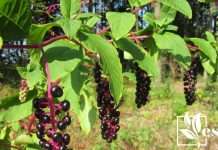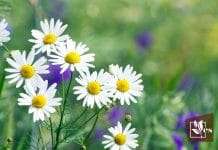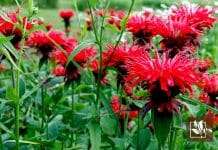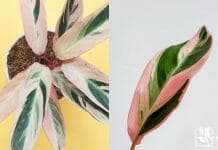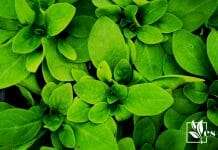Plants that soak up water have the remarkable capacity to take up high amounts of water. That’s why they are commonly grown in areas with so much water throughout the year.
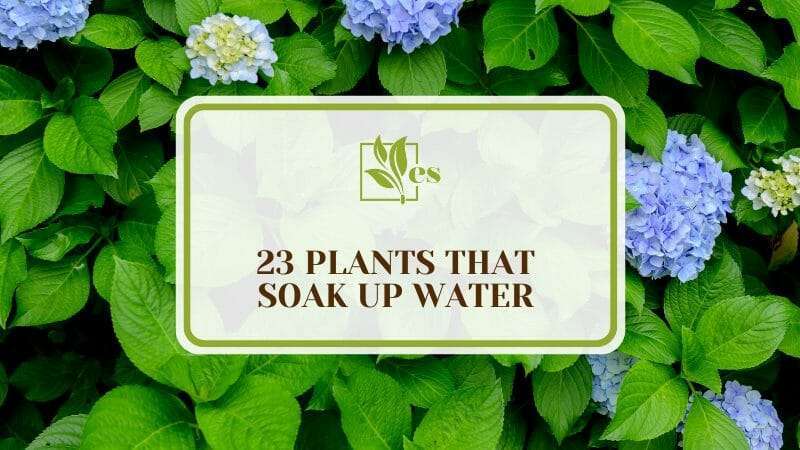
If your garden is located in an area that holds much water or experiences flooding, you must be selective and strategic about water absorbing landscaping. The list below will help you make a better choice.
JUMP TO TOPIC
- A List of Plants That Soak up Water
- 1. Carolina Jessamine
- 2. Bee Balm
- 3. Giant Elephant Ear Plant
- 4. Daylilies
- 5. Globeflower
- 6. Ferns
- 7. Golden Club
- 8. Trumpet Creeper
- 9. Lily of the Valley
- 10. Japanese Iris
- 11. Violet
- 12. Indian Grass
- 13. Cattails
- 14. Red Elderberry
- 15. Monkey Flower
- 16. Bigleaf Hydrangea
- 17. Common Winterberry
- 18. Hardy Hibiscus
- 19. Cardinal Flower
- 20. Swamp Milkweed
- 21. Marsh Marigold
- 22. Horsetail
- 23. Leopard Plant
A List of Plants That Soak up Water
1. Carolina Jessamine
Carolina is a unique plant with the ability to absorb water, it may also be called Gelsemium Sempervirens. It has tall stems that can reach up to 20 feet long, and as for its vines, they sprout a bright yellow in winter and sometimes in summer.
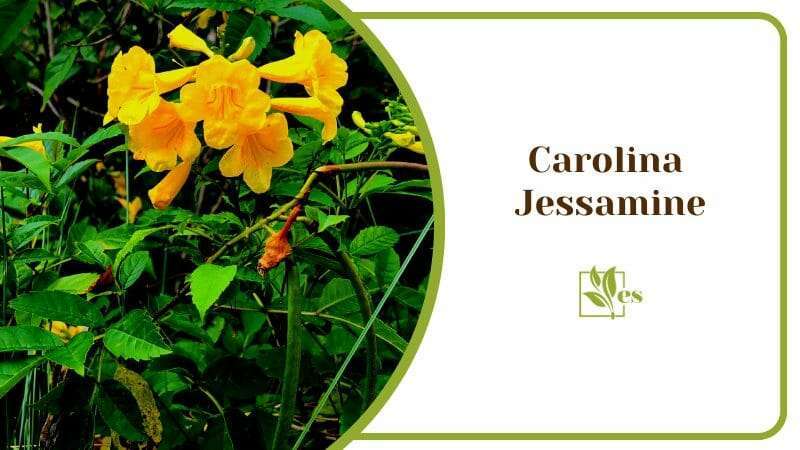
You can comfortably grow this plant in the Southeastern United States as it thrives in USDA hardiness seven through nine. Note that it does not tolerate frost, so areas that are too cold cannot grow it. This plant needs frequent pruning to keep it in control; otherwise, it takes over your garden.
2. Bee Balm
Bee Balm which is also called Monardam is easy to grow as long as the soils remain moist throughout the year. That makes it one of the perfect plants that soak up water in the shade. It is a native of North America and thrives in the woodland areas.
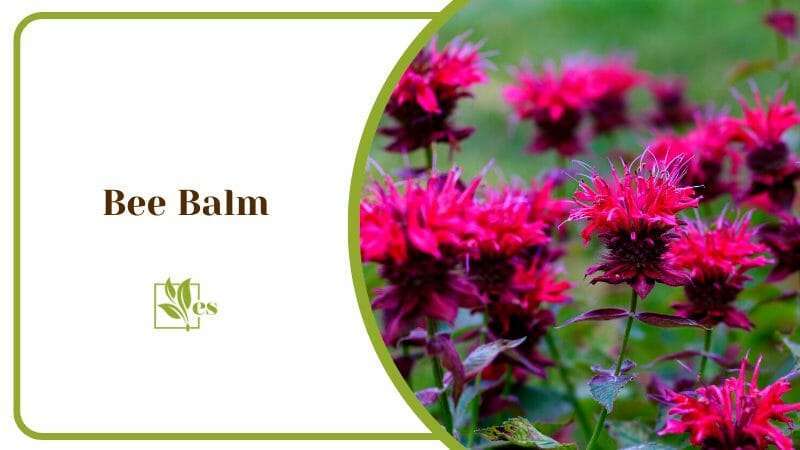
Like its name, the flowers attract bees, butterflies, and hummingbirds. They have red, pink, purple, and white petals that are so attractive during the summer. It thrives in zones four through nine growing to a height of about four feet maximum.
3. Giant Elephant Ear Plant
This plant’s large leaves resemble the actual ears of an elephant. It needs plenty of water to grow properly, which is why it commonly grows in moist areas, and most gardeners love it although it does have a heavy requirement of water. Using tap water is fine as long as you purify it.
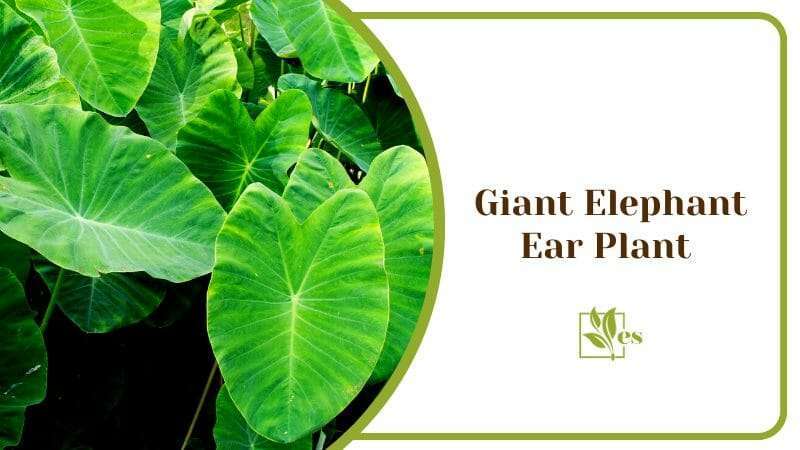
It is possible to grow these plants all year round in the water, as their foliage is dark green and perfect as a ground cover that absorbs moisture. Nonetheless, they do not require any maintenance as they are easy to grow.
4. Daylilies
Daylilies or Hemerocallis, are outdoor plants that need a lot of water to grow. They are the best to produce if you have little time to take care of them, as they can grow under minimal maintenance.
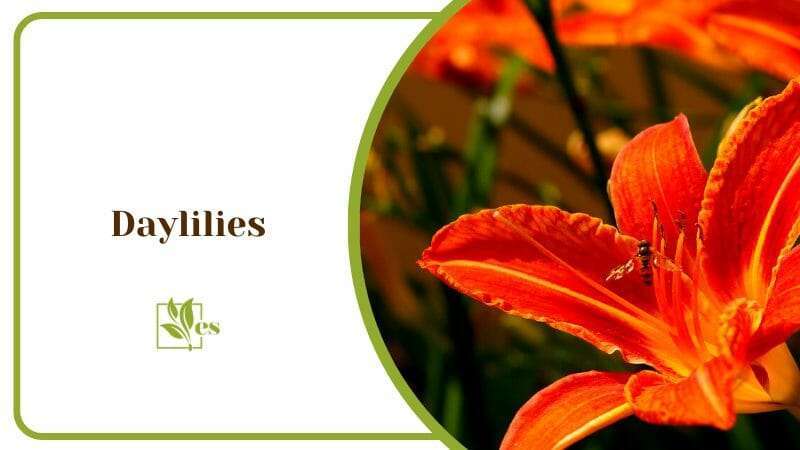
You can plant them in areas that have plenty of water and forget about them. Their beautiful bloom will fill up the space in spring and summer. These plants do not do well in heavy clay soils, so you must amend them with organic matter. They thrive in zones three to eleven. Check out 18 of the most common and beautiful purple lilies.
5. Globeflower
Globeflower, or Trollius, is unique and grows in moist areas around ponds or streams. The flowers are shaped like a globe and bloom into a shade of orange and bright yellow.
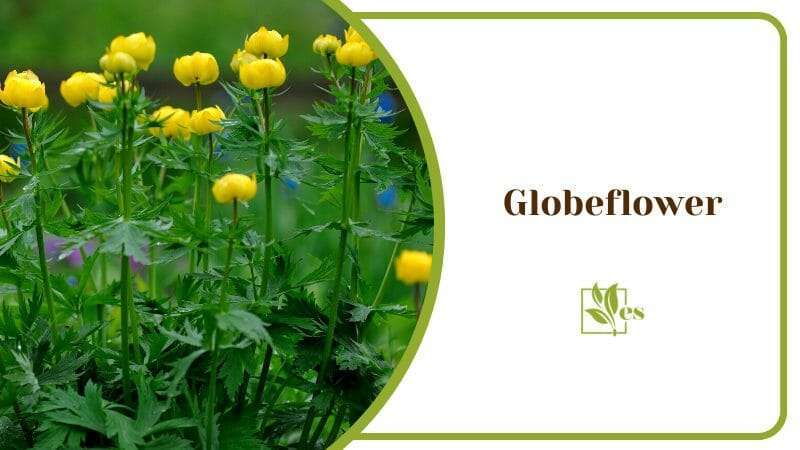
They thrive in USDA three through seven, reaching about three feet. This plant is not as popular as other foundation plants that absorb water, making it a unique one to grow. It is easy to care for these plants as long as you provide adequate water throughout their growing period. The more reason you should consider growing them in wet soils.
6. Ferns
Most ferns can tolerate excessively moist ground and are commonly grown in damp conditions, they would easily soak up all the water that you would provide. Ferns have a dense root system with the unique ability of water-absorbing foliage. The extensive root systems draw water and transport the foliage.
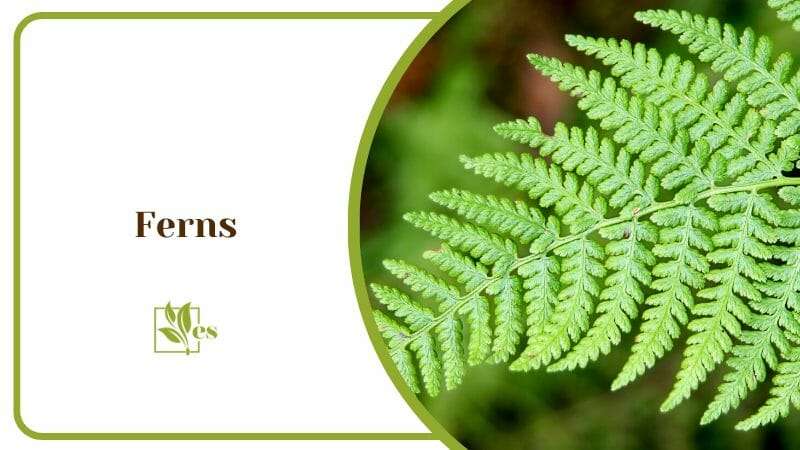
The taller the fern, the more water they would want to absorb. You can plant cinnamon, marsh, ostrich, or royal ferns. Note that you must take your time to choose the type of fern you would like to grow.
7. Golden Club
This native herbaceous plant is a perennial that grows in swampy areas. Golden club has dark green strap-like leaves that float over the water. They have a waxy texture that repels moisture. Its flowers are cylindrical and long, with tiny yellow blooms on a white, fleshy stalk.
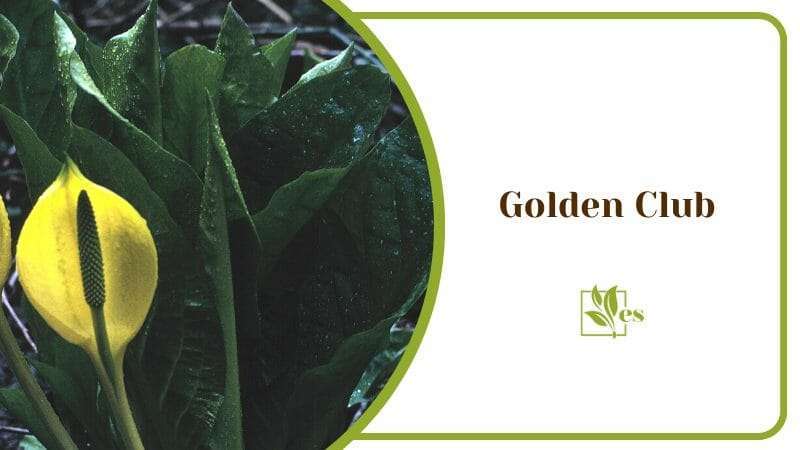
It is a vertical rhizome with thick roots that expand and contract. These roots draw the plant deeper, making it thrive in swampy places. They thrive in zones five through ten and are toxic to humans and pets, so make sure no one would consume it in any way.
8. Trumpet Creeper
Trumpet Creeper is a native of North America, it is also called the campsis radicans in the scientific term. It has glossy dark green leaves growing up to 15 inches long. Its flowers are trumpet-shaped with yellow, red, or orange color. These flowers attract hummingbirds and other pollinators during their bloom.
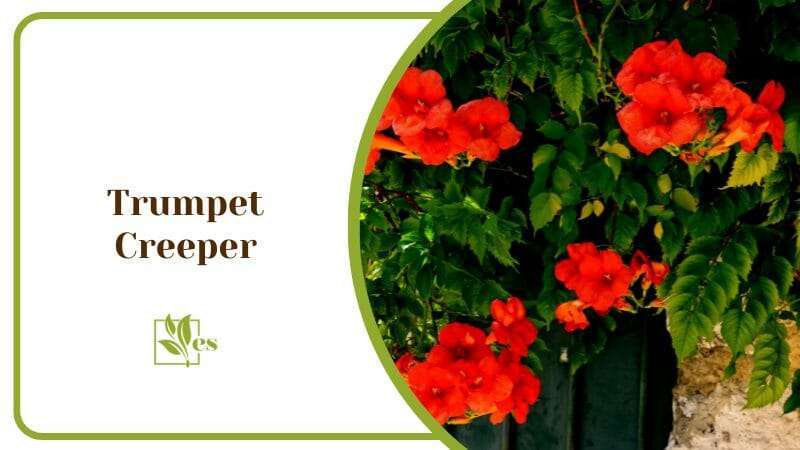
During winter, the foliage turns yellow and drops off the vine growing afresh in the spring. Grow it in the hardiness areas four through nine. It is mildly toxic to both pets and humans.
9. Lily of the Valley
The lily is a perennial that proliferates by spreading underground stems and upright shoots. These attractive plants thrive in moist ground, and they would grow happier and healthier.
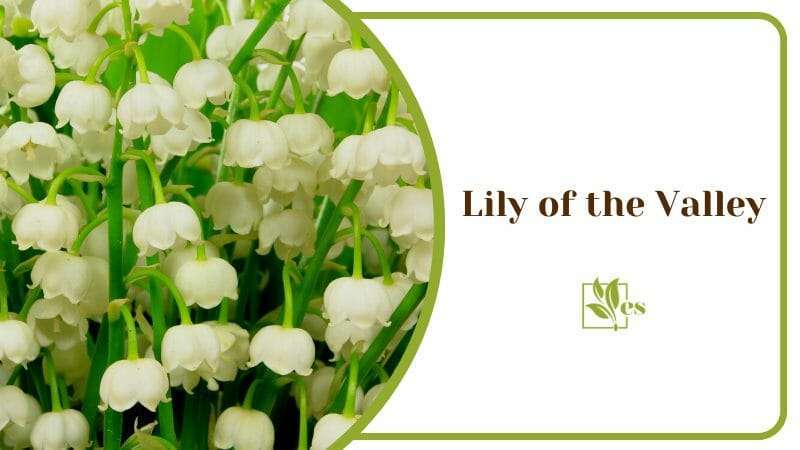
The cool temperatures make them dormant so planting them in the fall is excellent. This lily is also called Convallaria Majalis, it is perfect for absorbing water from soggy parches of your yard as it thrives in moist ground. Nonetheless, you should note that it is a poisonous plant that you should keep away from pets and kids, when consumed it might intoxicate. However, note that it grows well in USDA two through seven.
10. Japanese Iris
The Japanese Iris is among the perfect plants that take in a lot of water. The Iris Ensata has attractive medium green foliage and flowers that range from white, purple, or blue.
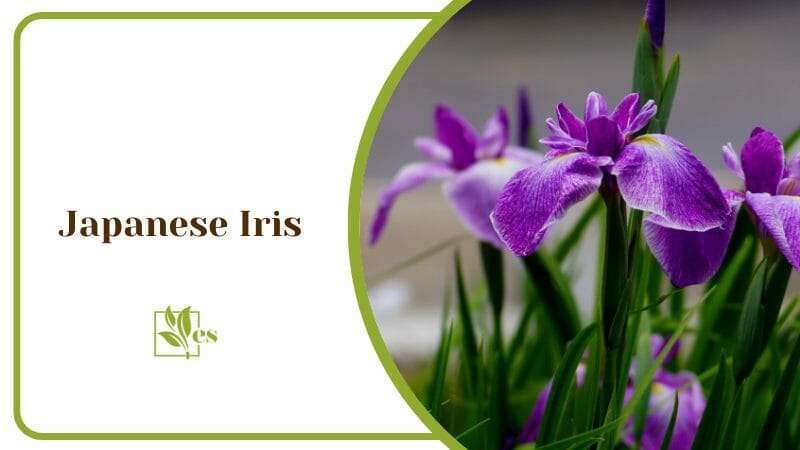
This plant requires minimal care and can be left alone to grow once planted in a soggy area, it will absorb its water at all times as it is always thirsty. It is rarely disturbed by pests or diseases, making it one of the best plants to choose.
Clay soil is unsuitable for this plant as its particles are packed too tightly. To loosen it, you must amend it with sand and compost. Grow it in USDA four through nine.
11. Violet
Violets, or viola spp. as they are commonly known, are easy to grow as they care for themselves. They have heart-shaped leaves and purple-blue flowers that bloom in the summer. They are biennials that come back each year.
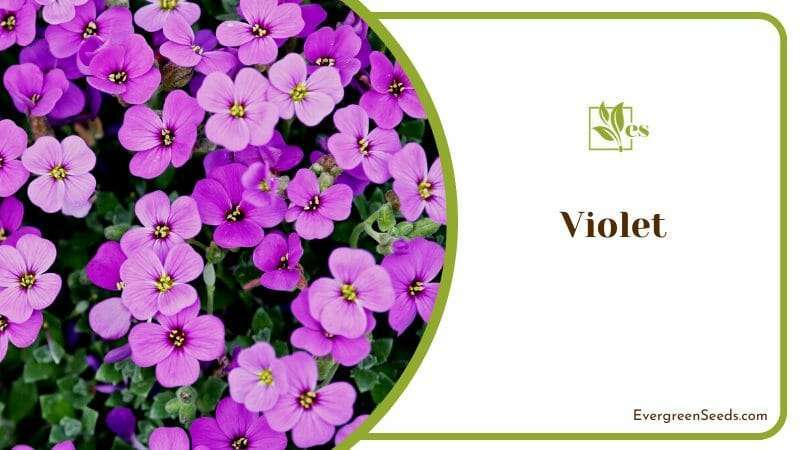
When planted, you must control violets as they can quickly become invasive. They tolerate very wet soils, making them perfect for growing in that patch of your garden. This plant is commonly affected by spider mites in dry weather so avoid growing it near your vegetable garden.
12. Indian Grass
It is a type of grass that is native to North America. It can absorb lots of water and is loved for its height and ornamental leaves.
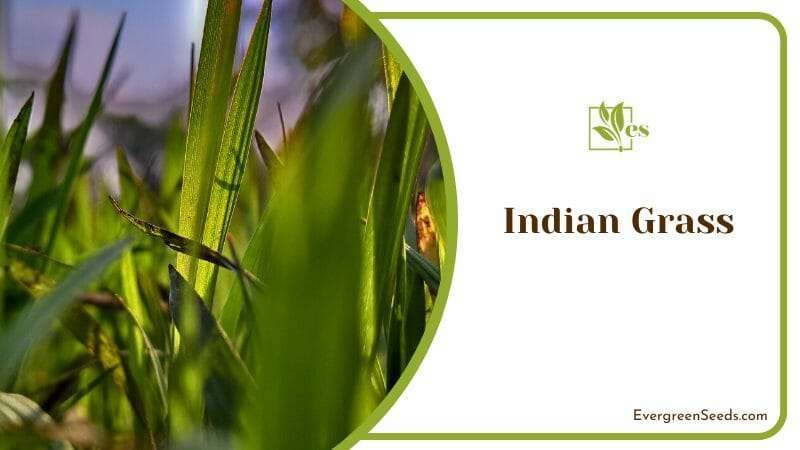
It grows up to six feet long, thriving in deep moist soils. It is a rhizome that starts developing in late spring through early winter. It is a nutritious grass to grow for domestic and wild animals. This grass requires very minimal care to grow and is hardy. It grows in zones four through nine and more so windy areas.
13. Cattails
Cattails love water; they are perfect for growing in swampy or marshy areas. They grow so well that, when left alone can become invasive. This plant is tall and sturdy, growing up to 10 feet tall. When grown in ponds, they attract fish as a source of food. They also provide an excellent bird home and draw much attention to wildlife animals.
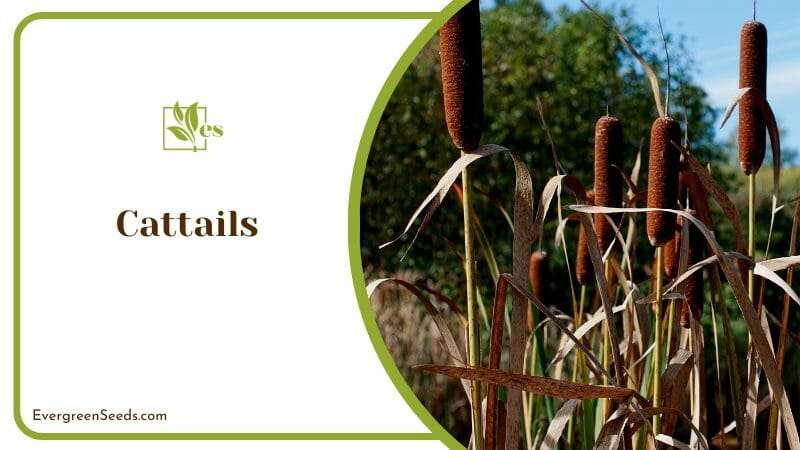
Cattails or the Typha are used to weave baskets and mats, making beautiful products. The roots are boiled, dried, and ground into flour. The whole plant is edible and used in various ways.
14. Red Elderberry
The red elderberry, also known as Sambucus Racemosa, thrives in woodlands, riparian lands, ravines, and cliffs. It is one of the fast-growing perennial plants that soak up water, growing to a height of about 12 feet.
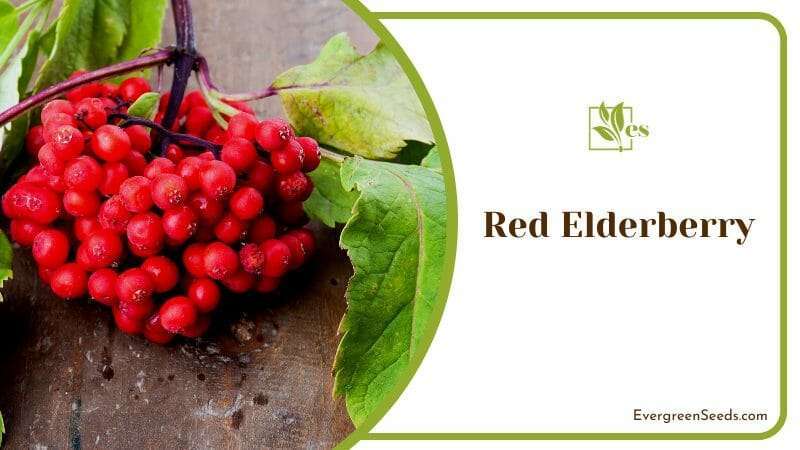
It is a popular addition to landscaping as it carries some showy features that stand out. It produces soft pink flower buds that reveal white or cream-colored petals.
It also produces fruits that attract birds, and much other wildlife comes to feed on the foliage. This plant will not grow on dry soil; it’s best to grow it in soggy places.
15. Monkey Flower
Monkey flowers are common in stream banks, marshes, and moist meadows. They are some of the best bushes that soak up water while making an attractive border, they are loved by gardeners.
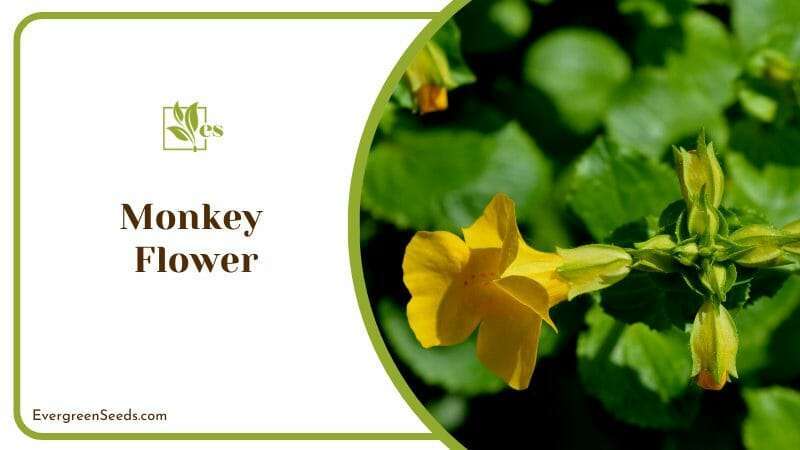
This plant is native to North America and grow in zones three to nine, scientifically they are called Mimulus Ringens. They flower during the fall, producing bright yellow flowers. It requires very little care when growing in moist soils.
16. Bigleaf Hydrangea
Bigleaf is best known for its large leaves, colorful blooms, and perfect height. It is interesting to learn that this plant produces flowers that change color according to the soil’s acidity or alkalinity. This plant is famously known as Hydrangea Macrophylla, and they are very well known to be thirsty plants that thrive the more their water absorption is.
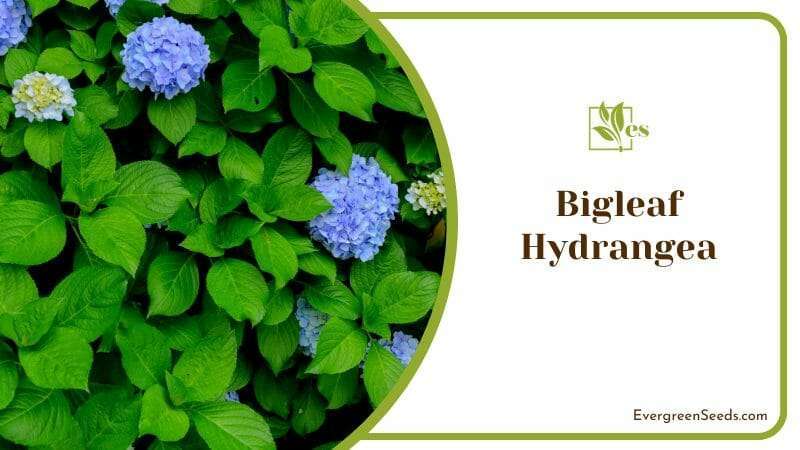
When the soil is high in alkalinity, the flowers will be pink; if it’s all acidic, they turn blue. This plant tolerates moist soils, making it a perfect one for soggy places. It is also an excellent one to use for hedges.
17. Common Winterberry
Common winterberry is native to North America and tolerates poor drainage in moist soils. It can successfully grow in fountains, ponds, moist gardens, or swampy areas. It can resist high humidity growing to a height and width of about eight feet. They bloom in spring producing white flowers that appear along the plant’s axis.
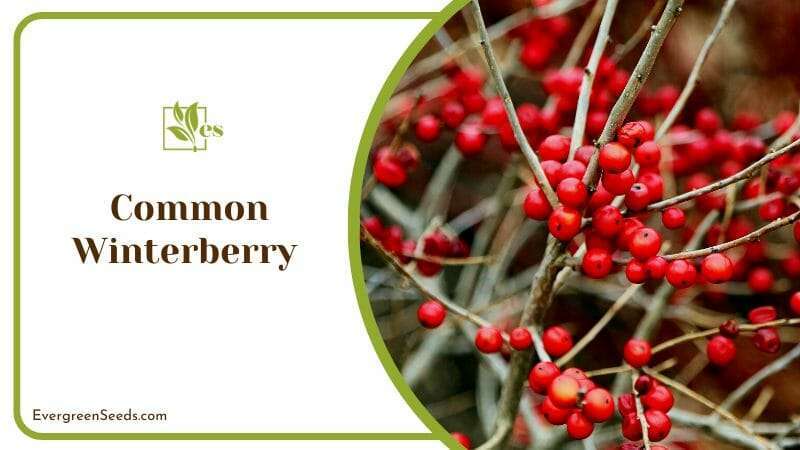
The berries are the crème of the plant and can survive through the cold months. They are a food source for birds but are toxic to humans and pets. During the Christmas holiday, you can use this plant to make a wreath with the berries making them stand out.
18. Hardy Hibiscus
This classic, hardy hibiscus or Hibiscus Moscheutos, works magic in moist areas. A variety of hibiscus hybrids are perfect for moist soils in landscaping. They also have a high level of hardiness for the cold weather.
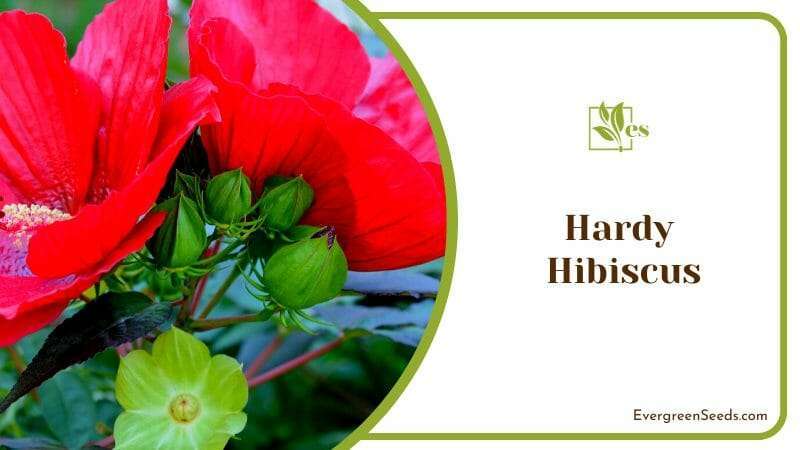
This variety produces pink and red flowers from midsummer to fall. For winter, it’s best to trim them down to allow new growth in spring. They thrive in USDA five through nine, requiring minimal maintenance. Their average height and width are about four feet max.
19. Cardinal Flower
Cardinal flower prefers consistently moist soils, making them a perfect wetland solution. They are a good choice for growing around the ponds and swamps.
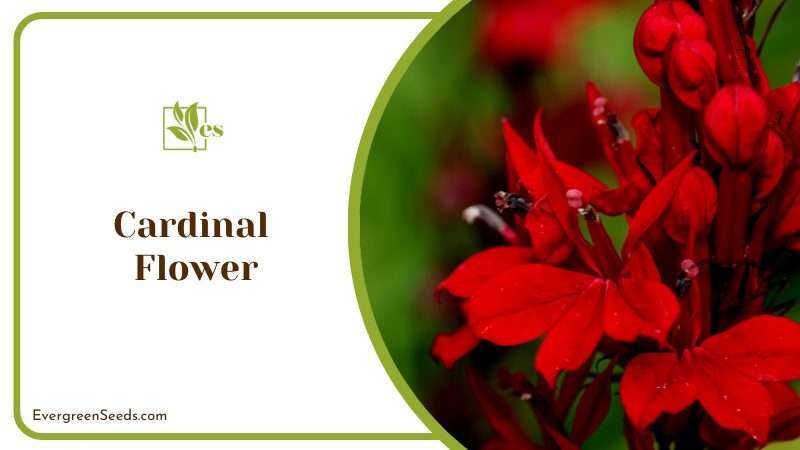
They grow up to four feet tall, spreading around two feet. Plan them in zones three to nine, and they will thrive as long as the water is enough. They require minimal maintenance and thus can grow without your attention. They grow to a height of four feet and two feet in width.
20. Swamp Milkweed
Swamp milkweed is another perennial that soaks up a good amount of water, it is also known as Ascelepias Incarnata. Its root system thrives in moist soils and can tolerate flooding and poor drainage. They also take in low oxygen levels and can be found in ditches, pond edges, lakes, and low-lying flat land.
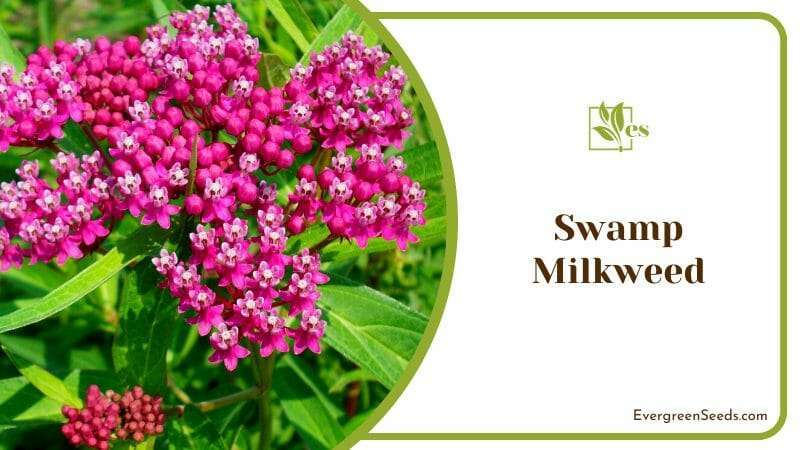
Milkweed attracts butterflies that lay eggs here so the larvae, once hatched, can find food to eat from its foliage. This plant is harmful to pets and humans and can irritate the nervous and digestive systems when ingested.
Therefore, what you have to do is keep it away from your rooms where kids would be in, so that they wouldn’t be intoxicated if accidentally consumed.
21. Marsh Marigold
It is common to see marigolds as you hike through the woods. Any time you notice it, you should know that it’s a soggy patch that you should stay away from.
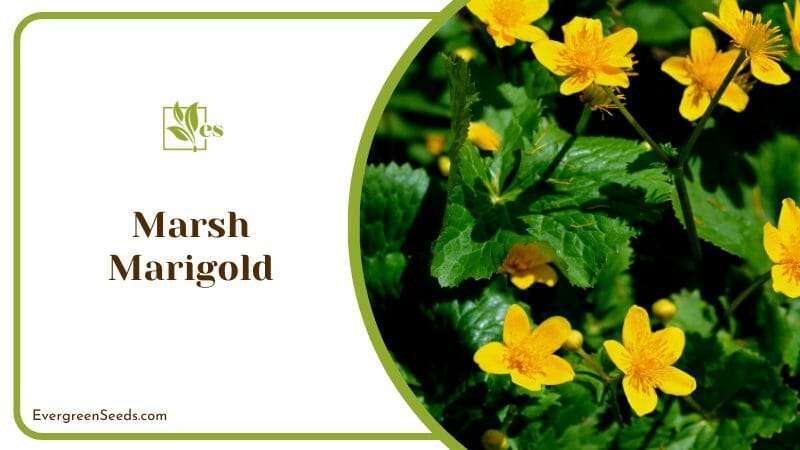
It is low maintenance and thrives in stagnant water. The cheerful yellow blooms come out in the spring when the sun starts to shine. They grow up to 18 inches tall in hardiness areas three through seven.
22. Horsetail
Horsetail is a bamboo look-alike and water-loving plant that spreads through rhizomes underground. When allowed to grow without control, they can become quite invasive.
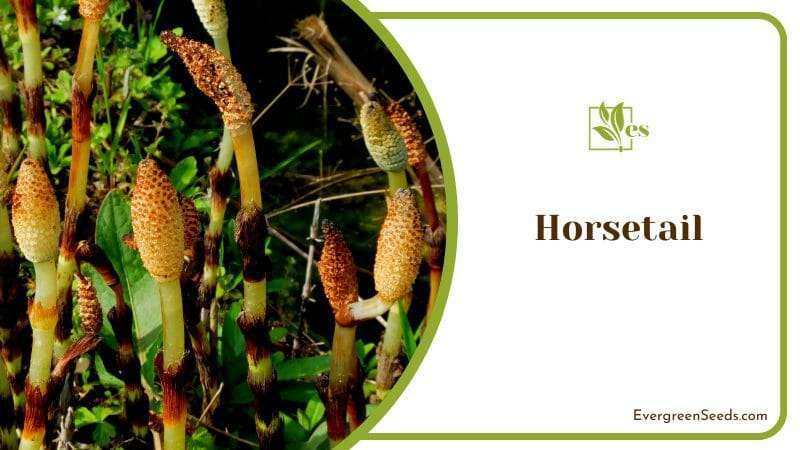
Therefore, you must keep them under control or grow them away from your garden. They grow to 4 feet tall and 6 feet wide. They are non-flowering, thriving in USDA four through nine.
23. Leopard Plant
The leopard plant is another option for growing in rain gardens and water features. It has showy yellow flowers that come out in early summer.
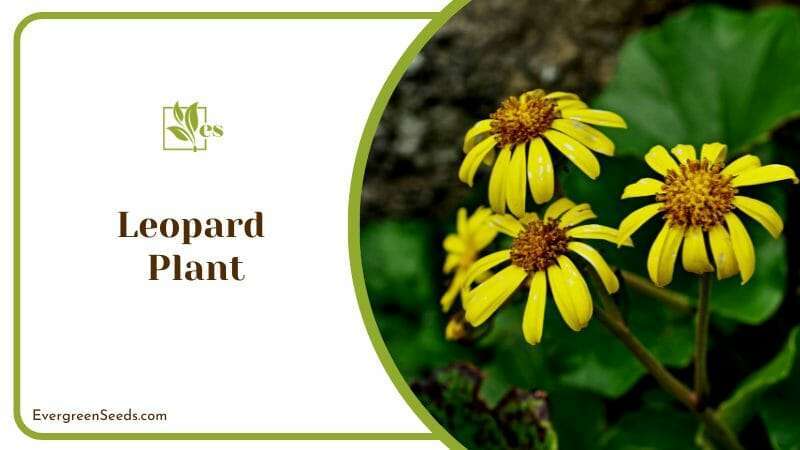
The leaves have a dark purple color with some green tones. It can grow in water all year round without dying and only does so when the soil dries up. It grows to three feet tall and 20 inches wide.


